Our advocacy program works to protect the health and well-being of the Bay. We take an inclusive and collaborative approach and work closely with all stakeholders including elected officials, community and business leaders, as well as policy and decision-makers.
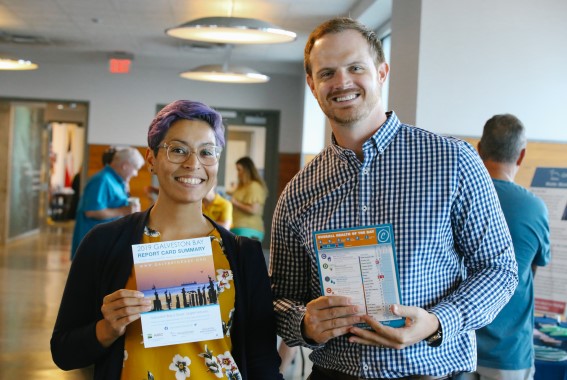
The Galveston Bay Report Card is an annual, community-driven, scientific analysis of the health of Galveston Bay. Twenty-two indicators across six categories (habitat, water quality, human health risk, pollution events and sources, wildlife, and coastal change) are graded in order to provide the public with an assessment of the Bay ecosystem and identify areas for improvement. Its annual development is the result of a partnership between Houston Advanced Research Center (HARC) and Galveston Bay Foundation (GBF), which has been continuous since the launch of the first report card in 2014.
To review this year’s grades and learn more about what you can do to improve the health of Galveston Bay, visit galvbaygrade.org.
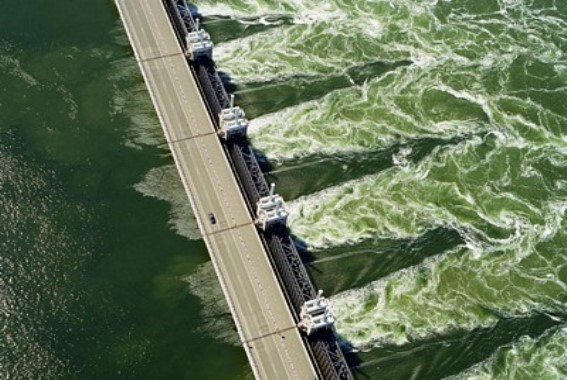
The Coastal Texas Study was started to uncover ways to reduce hurricane storm surge damages. It explores building levees, floodwalls, and surge barrier gates and making improvements to flood preparedness. While a tremendous amount of work has been put into the study, our review determined that the study’s recommendation of a coastal barrier does not explore all alternatives or disclose potential impacts.
A floodgate across the pass between Galveston Island and Bolivar Peninsula would restrict the flow of water in and out of Galveston Bay to-and-from the Gulf of Mexico. We are concerned about major direct and indirect environmental impacts to wetlands, beaches, dunes, and local wildlife, which hinges on the Corps’ decision to utilize a fortified dune levee system and/or earthen levees and floodwalls. We are currently waiting for a detailed analysis of the environmental impacts of storm surge barrier gates at Bolivar Roads on water quality and on the health of local oysters, shrimp, crab, and finfish populations. Galveston Bay Foundation has also requested a supplemental impact statement that fully and accurately discloses all of the potential environmental impacts of such a plan.

We encourage concerned members of our community to add their voice and submit comments using this sample letter.
You may submit comments by emailing CoastalTexas@usace.army.mil or by mailing your comments to this address:
U.S. Army Corps of Engineers, Galveston District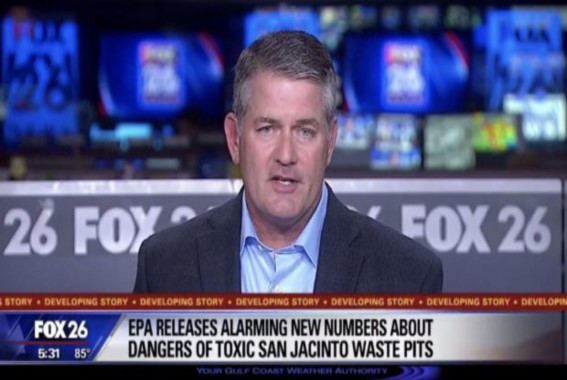
The San Jacinto River Waste Pits Superfund Site refers to 14-acre pits located on the west bank of the San Jacinto River immediately upstream of the I-10 Bridge in Channelview. In the mid-1960s, the pits received waste from a paper mill that contained dioxins, toxic chemicals that increase the risk of cancer, liver damage, and birth defects. As groundwater was pumped in the surrounding area over the next few years, the abandoned pits gradually sunk, and the toxic waste has been exposed to the waters of the San Jacinto River for decades.
Accumulation of dioxins in certain fish and crabs have prompted the state health department to issue seafood consumption advisories for Galveston Bay and its tidal tributaries. In addition, people fishing or crabbing in adjacent waters came into direct contact with dioxins when contaminated water was splashed onto and then absorbed through the skin. Both of these forms of contamination can lead to cancer and birth defects in populations who may be unaware of the extreme toxicity of the site.
In October 2017, the U.S. Environmental Protection Agency issued its record decision to clean up the site, but the cleanup process is unfortunately far from over.
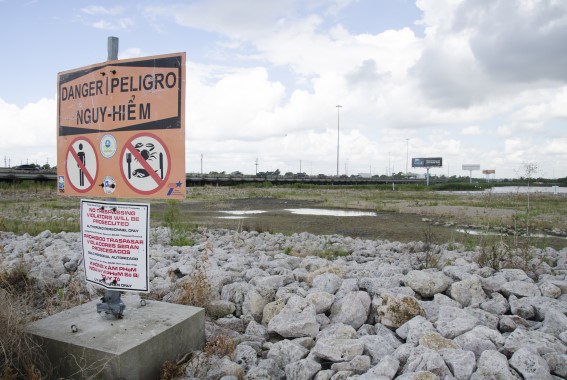
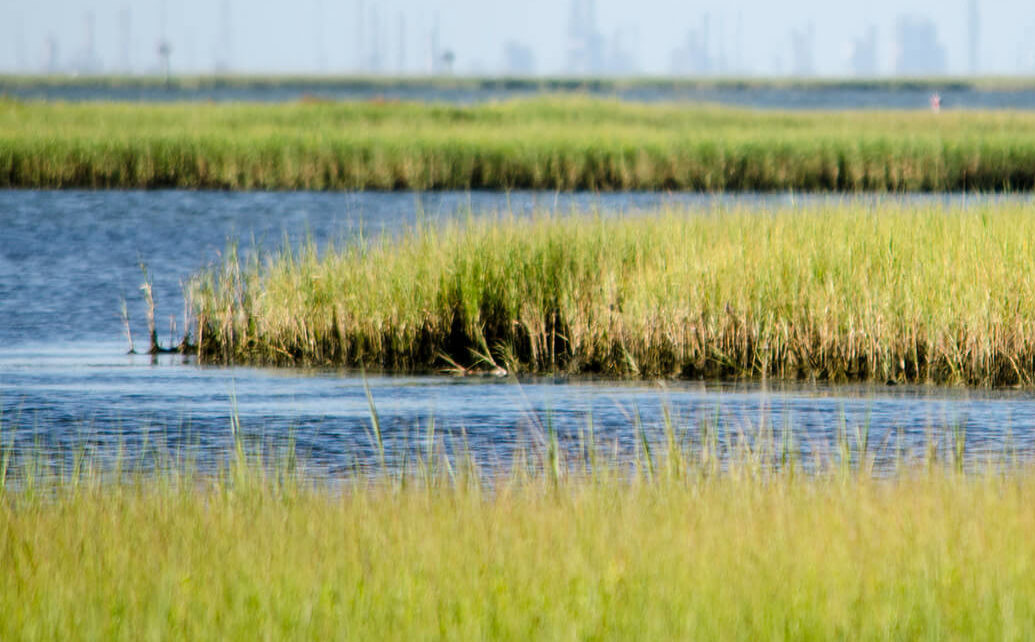
It’s important to protect your Texas heritage and the Bay. And that is what the Galveston Bay Foundation has been doing since our inception in 1987. We regularly review public notices for permit applications for activities that could adversely affect Galveston Bay. We make sure these applications are for projects that avoid sensitive and valuable habitats and reduce damage to habitat and subsequently, our Bay users such as you.
If the proposed project doesn’t appear to meet applicable regulations or mitigation requirements, we recommend changes or issue denials for the permit. Throughout the review process we work closely with the permit applicants, other natural resource agencies and organizations, and refer to the latest research relevant to the affected habitat.
For more information, contact our Land Acquisition Manager, Suzanne Simpson at 832-536-2269 or ssimpson@galvbay.org.

Under a Memorandum of Agreement with the U.S. Coast Guard and the Texas General Land Office, Galveston Bay Foundation acts as the unaffiliated community volunteer coordinator during oil spill incidents to alleviate the impact of oil spills on Galveston Bay and the central Texas coast. After our role in volunteer management during the 2014 Texas City “Y” Spill incident, Galveston Bay Foundation was awarded a Certificate of Merit in recognition of notable services that assisted the Coast Guard.
We’re always seeking volunteers who are interested in getting involved. Duties may include any number of tasks, such as administrative/clerical duties, technical and medical needs, public relations, helping at wildlife rehabilitation centers, pre-impact beach cleanup, and post-impact surveillance.
Sign up for our volunteer email list to get notified about volunteer opportunities during an oil spill.
